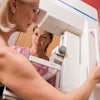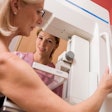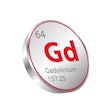Annual industry-sponsored research payments to radiologists increased by 50% between 2015 and 2024, according to a study published November 3 in the Journal of the American College of Radiology.
In total, industry paid $824.2 million to radiologists over the period, with the increase primarily driven by a 44% increase in payments to noncovered entities (NCEs), noted lead author Ethan Lee, of Johns Hopkins University in Baltimore, MD, and colleagues.
“In light of stagnating federal scientific research funding since 2003, industry-sponsored research with NCEs plays an important role in supporting basic science and clinical research to meet resource needs,” the group wrote.
NCEs are third-party organizations such as core imaging labs, contract research organizations, independent research institutes, or research foundations. These entities receive industry funding and distribute payments to covered radiologist principal investigators (PIs), the authors explained.
A recent analysis of the U.S. Centers for Medicare and Medicaid Services’ Open Payments program (OPP) found that research payments are increasingly dispersed through NCEs across specialties, yet it is unknown how research payments are distributed to radiologists, they noted.
Thus, in this study, the researchers characterized trends in research payments to radiologist PIs, with payments stratified by gender, assessed payments to NCEs, and conducted a corporate- and product-level analysis.
Based on publicly available OPP data from 2015 to 2024, 57,772 research payments were made to 2,963 radiologists, totaling $824.2 million. Over the period, the total value of payments increased by 50% (p < 0.01), the team wrote.
In total, 2,039 radiologists received research payments as PIs of NCEs, with these payments increasing from $46.2 million to $66.8 million, a 44% increase over the period (p < 0.01). Meanwhile, covered teaching hospitals also saw payments increase from $13 million to $23.4 million, an 80% increase (p = 0.36).
The researchers also found that gender disparities in research payments to radiologists at NCEs have grown. Male radiologists experienced a 54% increase in payments (p < 0.01), while women experienced a 0.3% decrease (p = 0.44). Overall, 82.7% of radiologists (n = 1,687) accepting research payments through NCEs were male, accounting for 80.3% ($428.5 million) of total research payment value.
“Although these trends may reflect differences in investigators seeking industry funding rather than inequities in funding mechanisms, these patterns underscore the need for further exploration into the root causes of female underrepresentation and strategies to address it,” the researchers wrote.
Finally, five manufacturers, Merck ($107.7 million), Siemens ($63.9 million), Novartis ($56.6 million), AstraZeneca ($54.8 million), and GE HealthCare ($50.3 million), accounted for 40.4% of research payments to radiologists. Three products, Keytruda (pembrolizumab; Merck, $101.7 million), Imfinzi (durvalumab; AstraZeneca, $32.5 million), and Opdivo (nivolumab; Bristol Myers Squibb, $25.7 million), accounted for 19.4% of the research payments.
“Industry’s growing investment in NCEs is noteworthy because these payments require fewer disclosures, particularly in payment allocation among multiple PIs,” the researchers wrote.
Ultimately, previous research has shown the potential for industry payments to influence physician behavior through prescribing patterns, even with small payments, the group noted.
“However, when transparent and appropriately managed, these relationships represent valuable partnerships in improving patient care and clinical outcomes,” it concluded.
The full study is available here.




















